Existing User Log In
New User Registration
Register for a free account to gain full access to the VGChartz Network and join our thriving community.



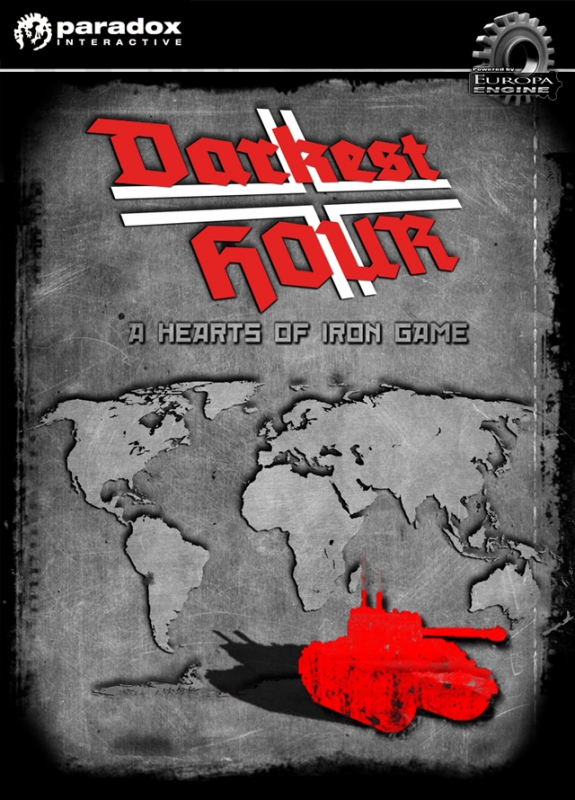

America - Front


America - Back

Darkest Hour Team
Strategy
 04/05/11 Paradox Interactive
04/05/11 Paradox Interactive  (Add Date)
(Add Date) 04/09/11 Paradox Interactive
04/09/11 Paradox Interactive
| Owners: | 3 | |
| Favorite: | 0 | |
| Tracked: | 0 | |
| Wishlist: | 0 | |
| Now Playing: | 0 | |
If there’s one thing Homer taught the world in ‘Treehouse of Horrors V’ (in the memorable storyline where he accidentally time-travels while trying to fix a toaster) it's that messing with the past can be both very troublesome and extremely fun. Swedish developers Paradox Studios seem to have taken this lesson to heart and elevated the notion almost to an art form with franchises such as Europa Universalis, Victoria, and Hearts of Iron. However, the studio isn’t entirely alone in their quest to rewrite the past, as an army of willing fan modders stand in alliance to help them push forth with their mission. The newest installment of the Hearts of Iron series is precisely that; a small jewel of what an inspired team of modders can achieve.
The game covers a fifty year time period spanning from 1914 to 1964 and covers the two world war eras and the run-up to the Cold War. Unfortunately, you can’t play the whole period in a single sweep. The game is divided into two campaigns; one focused in the Great War (which starts in 1914), and the second one focuses on World War II and its aftermath. The player can control the speed of time in the game at will and can even pause the game in order to more carefully ponder over tough decisions (and there will be a huge amount of decision making taking place most of the time!) The player basically has to make the entire set of major administrative decisions required to run a nation at war.
When and where to build land, air, or naval units, what type of units to build, and how to mobilize, merge or divide them to better fit the needs of the battlefield are just some of the routine choices constantly needed to keep your nation’s war machine in motion. The player can also change the ministers in his government staff, make alliances, move generals around, decide which areas of research to prioritize in order to improve the army, and so on. The level of micromanagement needed for the average game is just staggering.
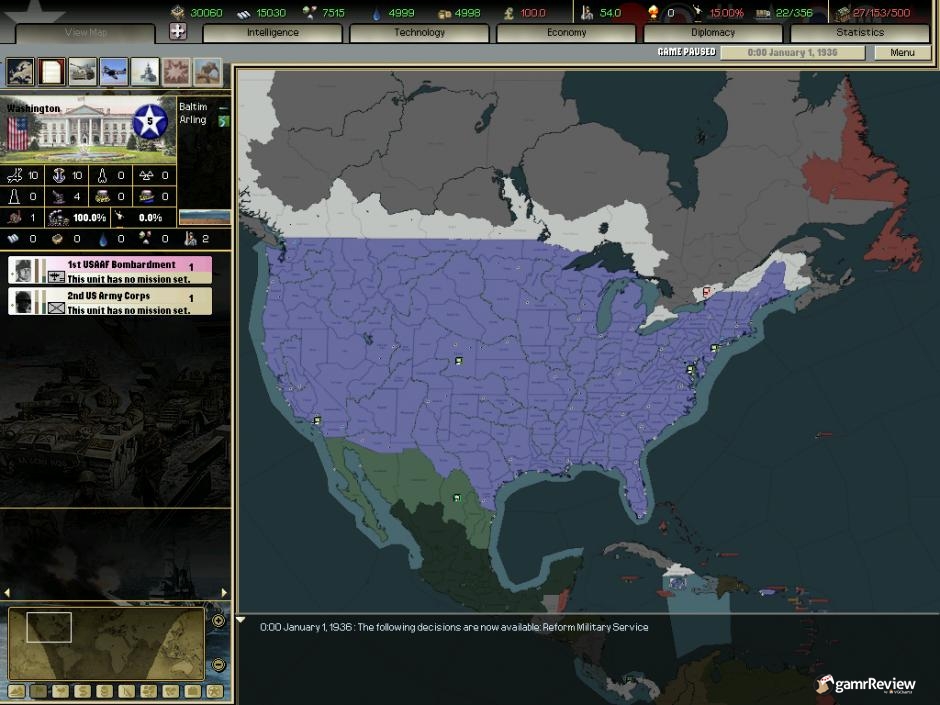
This emphasis on detail has also translated into the game map, where nations are now more deeply segmented into provinces. This greater segmentation has a direct impact on combat gameplay since there are far fewer chokepoint provinces, and one needs many more troops to cover the more fragmented battlefronts. The good news is that the more frequent battles also accelerate the rate at which your generals and troops gain experience in combat. The main map screen also allows you to keep track of ongoing battles, the location of your various armies and navies, the status of your production, and a series of other important details pertinent to your campaign.
Intelligence operations have been vastly modified in this version of the game. In previous versions of Hearts of Iron, the player had to send out individual spies on specific missions each time something needed to be done behind enemy lines. On this version, one only needs to fund an Intelligence Agency which handles your espionage needs automatically, although you can still commit them to specific goals from time to time. This funding also determines the effectiveness of all counterintelligence efforts to thwart enemy operations in the home territory. Of course, however tempting it might be, it’s always best to keep a close eye on the Intelligence Screen since if left alone it might run amok and eat up your general budget with pointless missions on unimportant targets.
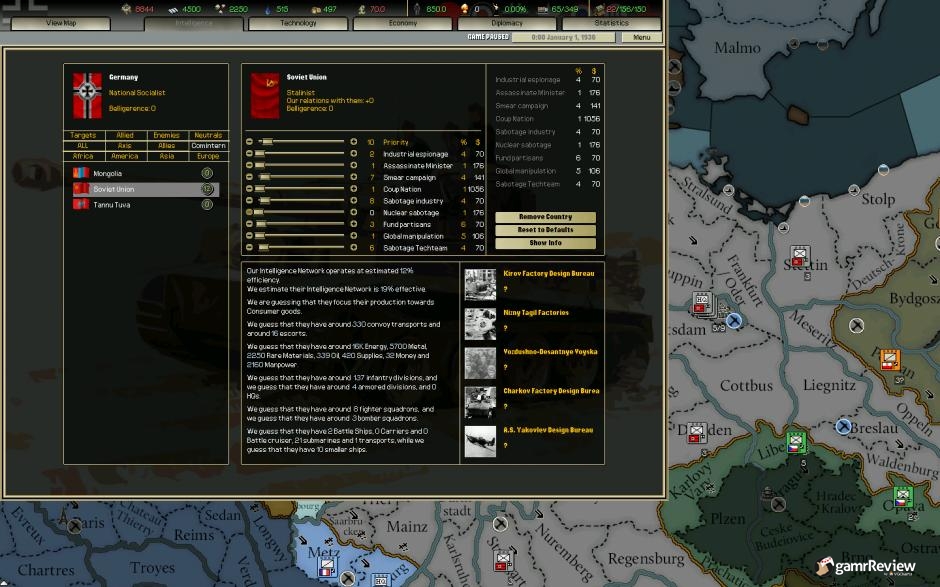
Another pivotal aspect of this game is technological research. Technologically speaking, most players start out with a fairly unbalanced military; while some units may be near cutting edge, some others may be lagging some twenty or more years behind current trends. Technological research is critical to correct these deficiencies, and all nations have the capacity to commission at least one research team to investigate military improvements (the maximum capacity is six R&D teams, but only the major world powers ever reach that level). An interesting observation here is that many of the research decisions are either/or affairs in which a choice will often close alternative development paths permanently. So the priorities you choose for your research will be pivotal in determining the strengths and weaknesses of the army and, as a consequence, the overall strategy the player’s nation will be able to follow throughout the game.
All the internal and external diplomatic affairs of the nation are managed from a single screen. In here, the player handles his relations with other nations; makes and breaks alliances, declares war or peace, and even signs or dissolves trade deals. It is also from this screen that the player chooses his cabinet members (each cabinet member can boost or depress different aspects of administration), and decides the ideological path he wants for his nation by periodically adjusting a series of sliders (more fascist, or more democratic, more free-market or more centralized economy, etc.)
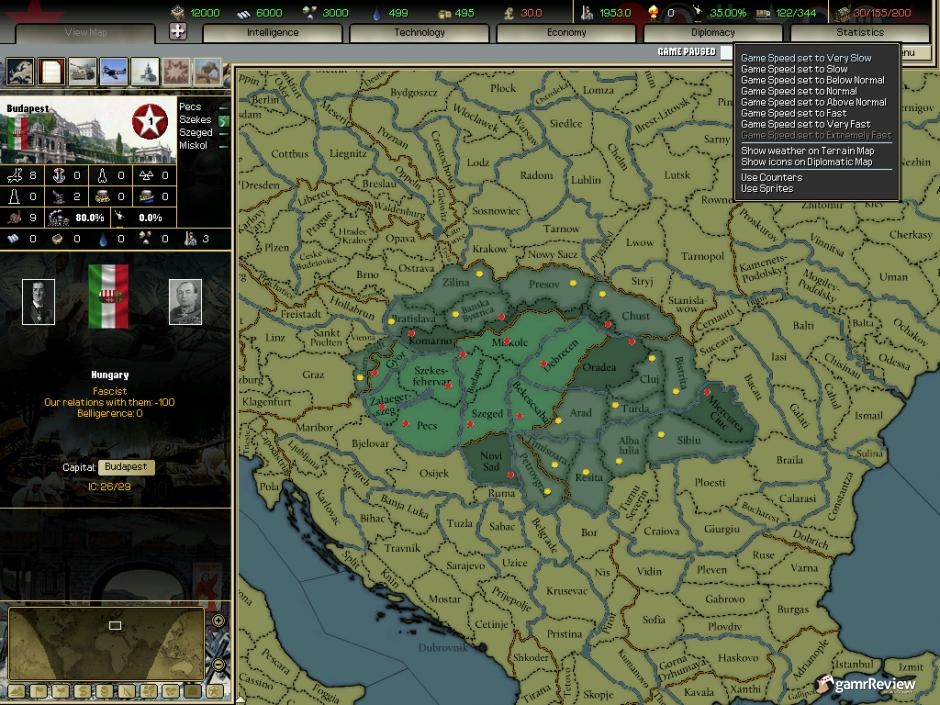
There is also a specific screen devoted to handling all production aspects. Darkest Hour: A Hearts of Iron Game is a game centered on wartime economies, so many of the market aspects of trade are severely skewed by the needs of the military, with the state playing an unusually overbearing role as supplier and buyer of goods. In here, the player funnels the resources the nation can gather to further the war effort by building new units, upgrading old ones, or reinforcing weaker ones. Although the convoy transport system of goods is largely automatic across the map, almost all other aspects of production can be handled at will on this screen.
Despite the availability of some two hundred playable nations, Darkest Hour: A Hearts of Iron Game is a game designed to be played as one of the major powers of the age. Playing as almost anything else can be very frustrating, either because the big boys are uninterested in letting your puny nation join their global alliances, or because they actually view you as palatable prey for their ambitions (in which case your run in the game will be brief). There is very little chance for a small nation (say Netherlands, for instance) to resist the charge of the German or British armies for long.
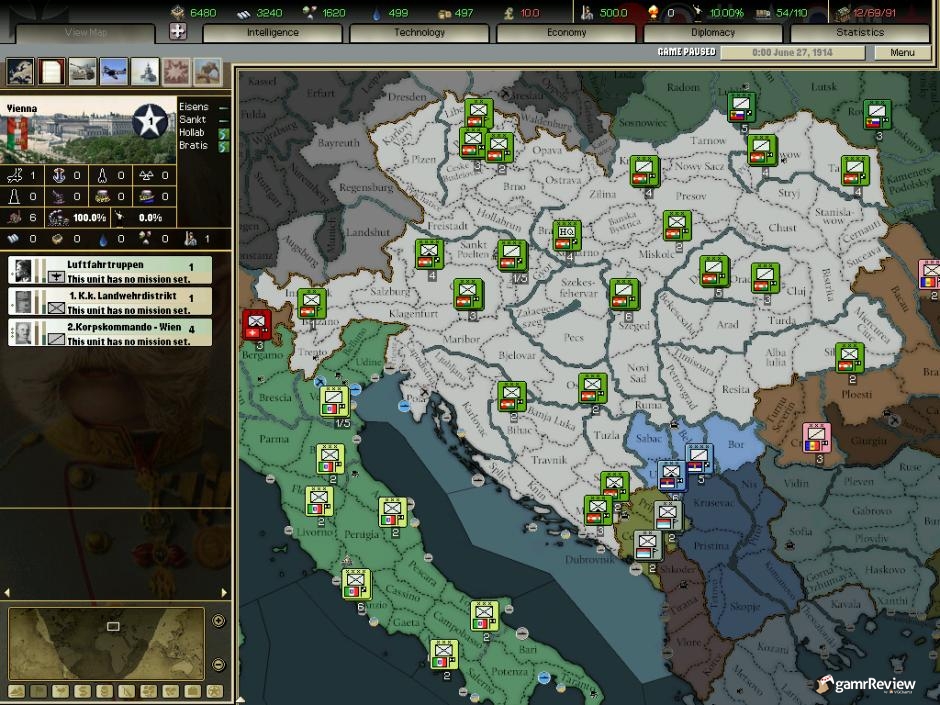
Perhaps the option would be to create your own corner of unrest (have Brazil invade Argentina, for instance), but even though this can be fun, one can’t shake of the notion of being only a minor side show to the main act going down in Europe. Given the above, it probably would have been a good idea to have included a few minor scenarios outside of the two world wars for other nations to shine (there were several colonial, independence, and minor international conflicts during the period covered by the game). Hearts of Iron II had several minor scenarios which are noticeably lacking in the new Darkest Hour version.
Like most other Paradox games, this grand strategy game focuses more on providing intricate gameplay and complex logical premises than on eye-candy graphics. Most of the time is spent looking at graphs, sorting through menus, and strategizing on a very detailed game map (at this point it is worth noting that the game can be easily translated into several languages from the startup menu, so if English is not your native tongue, you have a few options to choose from). Military units are represented by simple animations standing on the map which can be placed over the field in a way similar to pieces on a Risk or Stratego game. In the sound department, the game sports the same grandiose and inspiring musical backdrop seen in previous Hearts of Iron games, and little else. There are virtually no sound effects, and there is absolutely no voice acting.
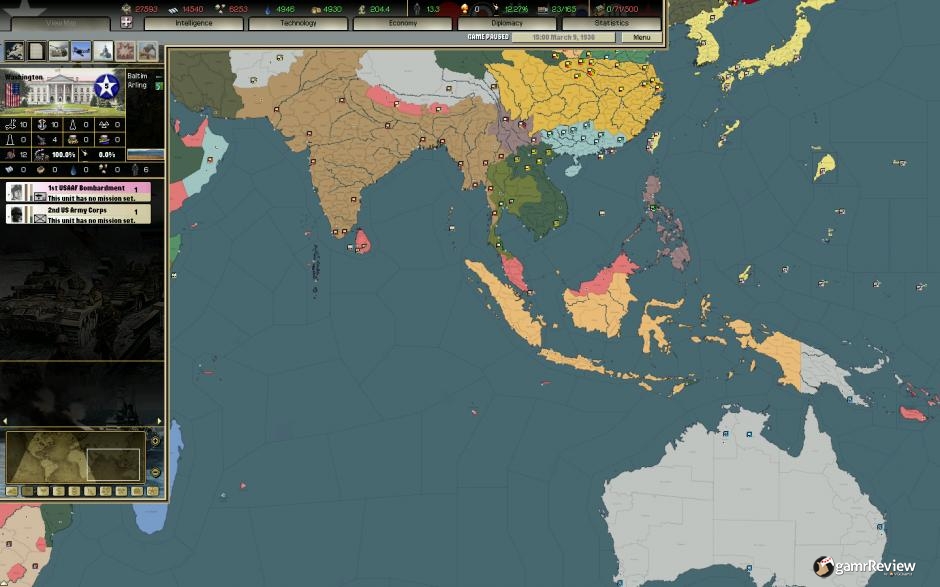
The game has a relatively high replay value over time. The two hundred or so playable factions (although not all are equally enjoyable) that can be played in two different time periods allow for a very varied game experience. In fact, even playing the same faction can be radically different on the second run if you choose a different technological and political path. Furthermore, there is always the option of playing the game online with friends. Add to all that the proven potential of this game to utilise contributions from modders, and you’ll realize this is a package that can probably continue giving you hours of fun several months (if not years) after originally acquiring it. On the down side, Darkest Hour: A Hearts of Iron Game is yet another mod built to breathe extra life into the not so novel HoI franchise, and once all the bright glitter is removed, the core experience might not feel all that fresh anymore for veterans of the series.
Overall, Darkest Hour: A Hearts of Iron Game still rates as a very attractive expansion upon the Hearts of Iron concept. Most of the things that were perceived as requiring improvement in the previous edition are now better, and those that were considered fine were left untouched. Since the game is built upon the same engine as Hearts of Iron II and Hearts of Iron: Armageddon, most of the mods for those games are also compatible with this new version. Also, if you’re into modding, then it will be easy for you to begin experimenting on this version without having to endure a steep learning curve. The level of complexity and low emphasis on graphic animations makes this game appealing only to a reduced number of diehard lovers of deep strategy games. If you are not part of this core, then you probably should just move on to the next review, but if you are, this small morsel is one of the deepest, most challenging titles you can find out there.









